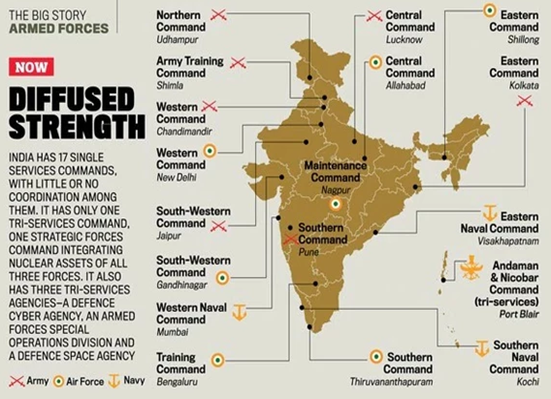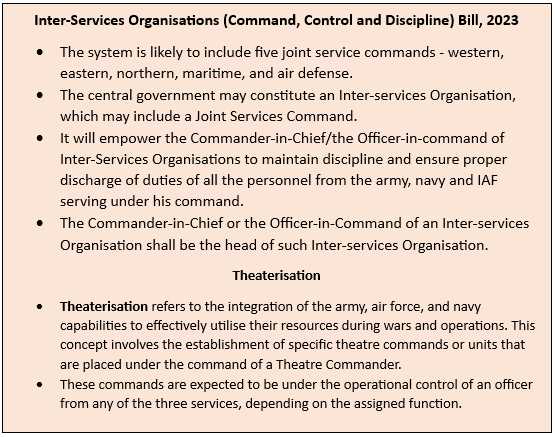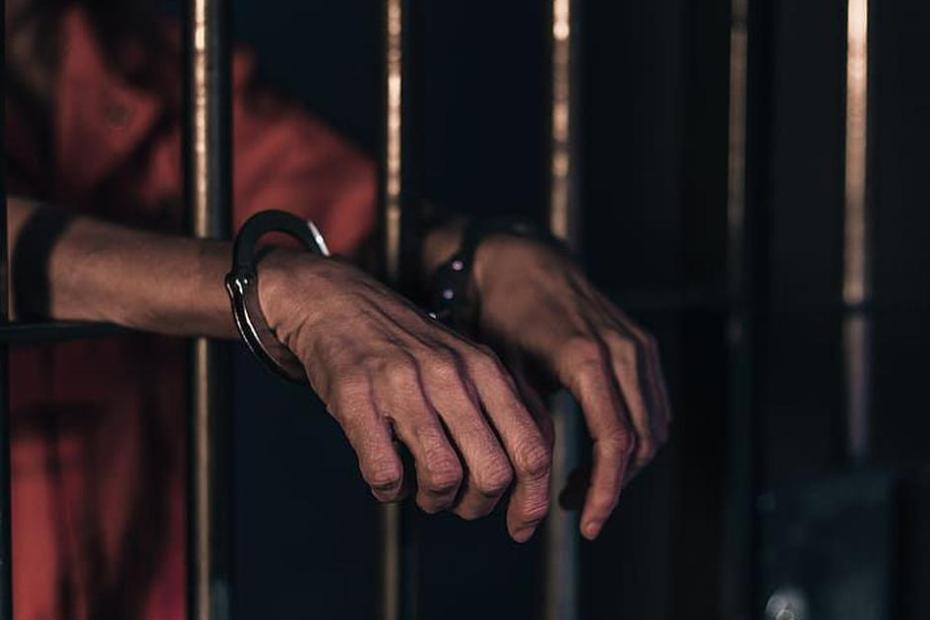- Courses
- GS Full Course 1 Year
- GS Full Course 2 Year
- GS Full Course 3 Year
- GS Full Course Till Selection
- Answer Alpha: Mains 2025 Mentorship
- MEP (Mains Enrichment Programme) Data, Facts
- Essay Target – 150+ Marks
- Online Program
- GS Recorded Course
- Polity
- Geography
- Economy
- Ancient, Medieval and Art & Culture AMAC
- Modern India, Post Independence & World History
- Environment
- Governance
- Science & Technology
- International Relations and Internal Security
- Disaster Management
- Ethics
- NCERT Current Affairs
- Indian Society and Social Issue
- NCERT- Science and Technology
- NCERT - Geography
- NCERT - Ancient History
- NCERT- World History
- NCERT Modern History
- CSAT
- 5 LAYERED ARJUNA Mentorship
- Public Administration Optional
- ABOUT US
- OUR TOPPERS
- TEST SERIES
- FREE STUDY MATERIAL
- VIDEOS
- CONTACT US
Integration Among Defence Forces
Integration Among Defence Forces
13-10-2023

Context
Recently, The Chief of Defense Staff (CDS) announced that nine verticals, including supply chain management, maintenance, training, intelligence, and information flow, among others, had been identified for integration among the three defence services.
What is the Integration Among the Three Defense Services?
- The creation of Integrated Theatre Commands (ITCs), the Office of the Chief of Defense Staff, Cyber and Space Commands, resource sharing, and cooperative training and exercises are just a few of the initiatives that are part of India's integration of three defence services.
- Integrated Theatre Command:
- An integrated theatre command aims to unify the three Services' command over geographical theatres (areas of strategic and security interest) under the direction of a single commander.
- With seamless effectiveness, the commander of this force will be able to utilize every resource available to him, including the Indian Air Force, the Army, and the Navy.
- Individual Services will not answer to the consolidated theatre commander.
- Resource duplication can be prevented by the three forces working together and integrating. All services will have access to the materials listed under their respective sections.
- The defence establishment will become more cohesive as a result of the services getting to know one another better.
- Three integrated theatre commands are suggested by the Shekatkar committee: the northern command for the China border, the western command for the Pakistan border, and the southern command for the marine role.
- Joint Command in Andaman & Nicobar Islands:
- In the Andaman and Nicobar Islands, there is just one joint command.
- Situated at Port Blair in the Andaman and Nicobar Islands of India, it is the first Tri-Service theatre command of the Indian Armed Forces.
- It was established in 2001 with the aim of defending India's strategic interests in the Strait of Malacca and Southeast Asia by accelerating the quick deployment of armed forces within the islands.
- The Strategic Forces Command (SFC), the other tri-service command, is in charge of the delivery and operational management of the nation's nuclear weapons.
- Current Situation:
- There are presently 17 commands in the Indian armed forces. The Army and the Air Force each have seven commands. Three commands make up the Navy.
- Every command is led by a military officer with four stars.
Recent Developments in Integration Among the Three Services
- A significant milestone toward the advancement and integration of defence forces is the appointment of the CDS and the establishment of the Department of Military Affairs (DMA). Work that is solely related to military affairs will be under the DMA's jurisdiction. Formerly, the Department of Defense (DoD) was responsible for these duties.
- CDS: It is the single-point military adviser to the government as suggested by the Kargil Review Committee in 1999.
- The three Services' operations are supervised and coordinated by it.
- Decisions regarding inter-service procurement are subject to CDS's authority as head of DMA.
- Significance of CDS:
- Synergy between Armed Forces and Government: Improved collaboration between the armed forces and the Ministry of Defense administration is fostered by CDS.
- Jointness in operations: As CDS encourages greater cooperation in operations, the former Chiefs of Staff Committee—COSC—has become dysfunctional.
- Concerns of the Indian Air Force (IAF): The IAF is concerned about the paradigm regarding the distribution of its air assets, the nomenclature of commands, the leadership of theater commands, and the diluting of chiefs' powers, even though the army and navy support theater commands.
- New Uniforms: All officers holding the ranks of major general, lieutenant general, brigadier, and general will wear matching berets, rank badges, belt buckles, and shoes, as well as do away with shoulder lanyards.
- With the introduction of the Inter-Services Organizations (Command, Control and Discipline) Bill, 2023 in the Lok Sabha, selected military commanders will have the authority to oversee soldiers and enforce discipline, irrespective of their service affiliation.




